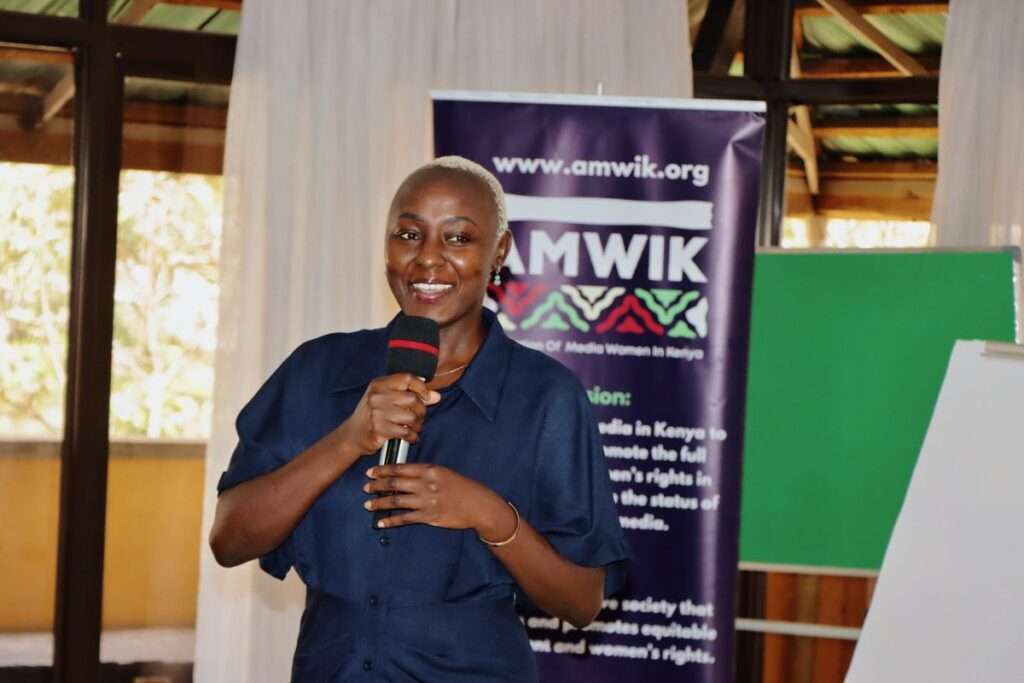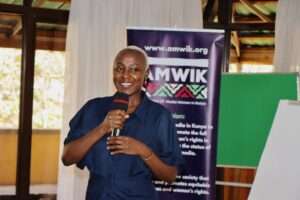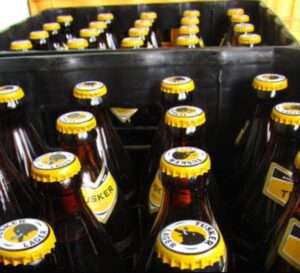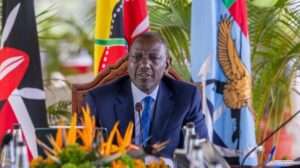
AMWIK Executive Director Queenter Mbori. Photo/Courtesy/X/ AMWIK.
Association of Media Women in Kenya (AMWIK) has called for stronger Online protection for journalist stating the importance of digital safety and security as a crucial part of Journalistic work.
Speaking on X during a meeting on online harassment in the media, AMWIK Executive Director Queenter Mbori emphasized the need of digital safety acknowledging the value of online platforms to journalist, she urged media houses and individual journalist to look on a safety measure in order to safely navigate these spaces.
“Digital platforms are one of the most valuable resources that we have seen that can support and advance journalistic participation and growth in media industry. As more journalism moves online and social media becomes central, Increasing the digital risk” Mbori said
“Digital violence especially TFGBV is still prevalent in platform that we normally use like Facebook and WhatsApp and for people living with disability according to AMWIK’S research the violence escalates physically from online” she added.
Moreover, Mbori termed digital security as not a small matter but a global issue noting serious consequences like threats of physical and sexual violence, mental health tolls, and self-censorship. She noted that online violence surely does escalate to physical violence stating the mental effect it leaves on a journalist.
“From the trends, online violence reflects physical violence, it is a deeply rooted patriarchal values and attitudes. Online harassment is disrupting lives of media professional, offline it’s disturbing their mental health and impacting their carriers and also affecting their participation in public discourse” She said.
Despite the efforts to end online violence, some journalists are still dealing with online threats like Doxxing , cyber stalking, trolling and impersonation while still trying to maintain their professionalism. As there are no recorded data showing prevalent threat affecting journalists, some threats are more common than the others.
Media house has called gendered and AI-facilitated threats. During the International Day to End Impunity for Crimes Against Journalists (IDEI) 2025 in Mombasa Stakeholders raised concern over AI-amplified harassment citing the “sophisticated digital harassment, including deep fakes and AI-amplified abuse.
According to 2024 UNESCO report ‘Press and Planet in Danger’, statistics covered over 900 environmental journalists from 129 countries with 70 percent reported online harassment experiencing attacks, threats, or pressure linked to their reporting. Between 2009–2023, a record 749 journalists and media outlets covering environmental issues were targeted in 89 countries. among them 45 percent opting to self-censor due to fear of attack or conflict with powerful interest.
In 2025 Safety of Journalists Platform -Council of Europe (2025) reported 1,622 active alerts serious threats to media freedom. out of all alerts, it was noted 579 alerts related to “harassment and intimidation of journalists” that includes online threat and harassment.
Similarly, on 2025 International Day to End Impunity for Crimes Against Journalists (IDEI), The Media Council of Kenya (MCK) highlight the documentation of 92 cases of media freedom violations in Kenya in 2025 a decrease from 130 recorded in 2024.






